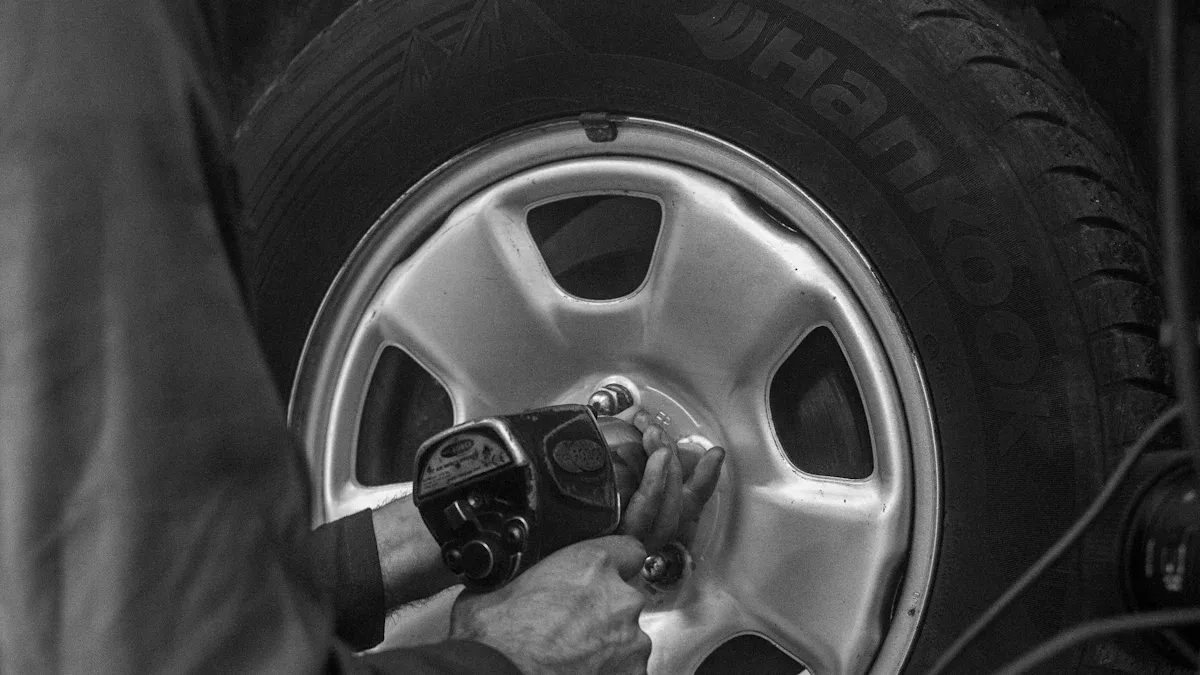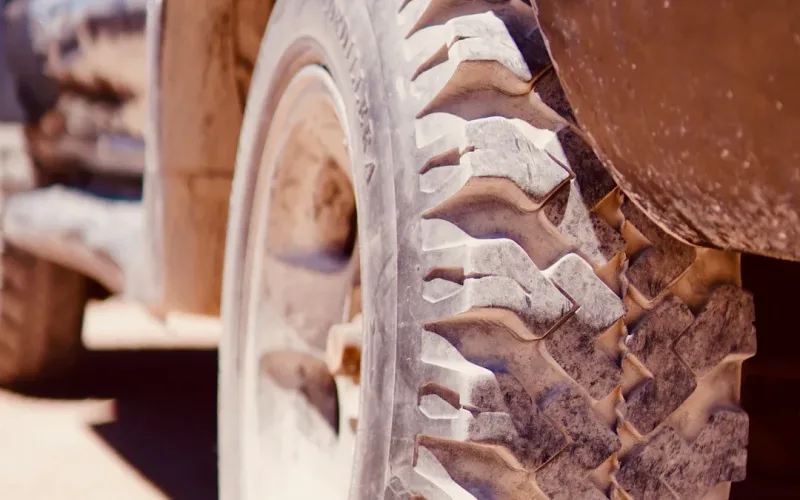

admin1
July 29, 2025
Valve Stem Core Maintenance Tips Every Car Owner Should Know

You depend on your vehicle every day, so keeping your tires in top condition supports vehicle safety. Paying attention to the valve stem core can help you prevent air leaks that lead to a leaky valve stem. When you check your tire pressure regularly, you protect your tire from damage and keep your ride smooth. Simple steps like these can extend tire life and keep you safe on the road.
Essential Valve Stem Core Maintenance Tips
Preventing a Leaky Valve Stem
You can prevent a leaky valve stem by following a few simple steps. Regular inspection and maintenance help you catch problems before they turn into bigger issues. When you check your valve stem core during tire changes or routine checks, you spot early signs of wear or damage. Always use a valve stem cap to keep dirt, water, and debris out. This small part acts as the first line of defense against leaks and protects the valve core from damage. Plastic valve stem caps work best, especially on aluminum tire pressure monitoring system (TPMS) valves, because they prevent electrolysis and corrosion.
If you notice corrosion or damage, replace the valve stem core right away. Tighten the core properly, but do not over-torque it. Over-tightening can damage the threads and cause a leaky valve stem. Clean the valve stem threads before installing a new core. If you are unsure about the process, consider professional installation for safety and accuracy. Using a valve core tool makes diagnosing, cleaning, and replacing the core much easier.
Tip: Use soapy water to check for leaks. Apply it around the valve stem and look for bubbles. Bubbles mean you have a leak that needs attention.
Ensuring Proper Tire Inflation and Safety
Maintaining the valve stem core is key to keeping your tire pressure at the right level. The valve stem core creates an airtight seal that keeps air inside the tire. If the seal fails, you lose air, which leads to underinflated tires. Underinflation causes the tire sidewalls to flex too much, creating heat and wearing out the rubber faster. This can result in a blowout or loss of control, putting vehicle safety at risk.
Automotive research shows that the valve stem core is essential for tire inflation and deflation. It keeps the air in and contaminants out. Dirt, sand, and moisture can stop the core from sealing properly. Moisture can even freeze and break the seal, causing a leaky tire valve. Always use a valve cap as a backup seal. Regularly inspect and replace valve cores to keep your tire pressure steady. This helps your vehicle perform better, saves fuel, and keeps you safe on the road.
Avoiding Common Valve Stem Core Issues
Many common problems can affect the valve stem core. Cracks from extreme temperatures, missing or damaged valve caps, and corrosion from road salt all increase the risk of a leaky valve stem. Improper installation can also cause poor sealing and air leaks. Over time, frequent tire inflation wears out the valve core, making it less effective at holding air. UV rays can make rubber parts brittle and prone to cracking.
You can avoid these issues by inspecting your valve stems during every tire check. Replace the valve core if you see any signs of wear, corrosion, or damage. Always use high-quality valve caps and make sure they are secure. If you need to fix a leak, use a valve core tool to remove and replace the core. Regular maintenance helps you prevent a leak and keeps your tires in good shape. This reduces the need for emergency repair and helps you fix small problems before they become big ones.
- Inspect valve stems for cracks, corrosion, or missing caps.
- Replace valve cores when you change tires or notice damage.
- Use quality valve caps to keep out dirt and moisture.
- Install valve cores correctly to ensure a tight seal.
- Protect rubber components from UV exposure when possible.
By following these tips, you keep your tires safe, avoid a leaky valve stem, and extend the life of your tires.
How to Inspect Your Valve Stem Core

Checking for Air Leaks
You can diagnose a leaky valve stem by using a simple method at home. After inflating your tire to the recommended tire pressure, squirt soapy water around the valve stem core. Watch closely for bubbles. If you see bubbles forming, you have found a slow leak. This test helps you catch air leaks early before they cause tire deflation or slow air loss. You should include this check in your regular inspections. If you are unsure about the results or see bubbles, ask a professional for help.
Tip: Always keep a valve core tool in your car. This tool helps you remove or tighten the valve stem core if you find a problem.
Spotting Damage, Corrosion, or Wear
You need to look for signs of damage or corrosion every time you check your tires. Use this checklist to spot trouble:
- Discoloration on the valve stem, especially if the cap is missing
- White residue or corrosion around the nut or valve core
- Physical damage, such as cracks or dents on the valve stem
- Retaining nuts that split or feel stuck when you try to turn them
- Warping or bending of metal parts
- Stems that snap or break when you attach an air chuck
If you see any of these signs, your valve stem core may not seal properly. This can lead to slow air loss or even sudden tire deflation. Clean the area with a damp cloth to remove dirt and debris. Make sure the valve cap fits snugly to protect against dust and moisture.
When to Replace the Valve Stem Core
You should replace the valve stem core at key times to keep your tires safe. Experts recommend replacing the core every time you install new tires. Rubber parts wear out from heat, cold, and sunlight. Over time, this can cause air leaks or total air loss. Replace all parts of the valve stem assembly—including the core, grommet, nut, and cap—when you change tires or remove sensors. This prevents corrosion and keeps your tire pressure steady. Always use the right materials and follow the manufacturer’s instructions for best results.
Note: If you notice persistent air leaks or damage during regular inspections, replace the valve stem core right away to avoid tire deflation.
Cleaning and Replacing the Valve Stem Core
Step-by-Step Cleaning Instructions
Keeping your valve stem core clean helps prevent leaks and extends the life of your tires. Dirt and debris can block the seal, so regular cleaning is important. You can follow these steps to keep the valve area in good shape:
- Remove the valve cap from the tire.
- Use a valve core tool to unscrew and remove the valve stem core.
- Wipe the core and the inside of the valve stem with a clean, dry cloth.
- If you see any buildup, use a small brush to gently clean the threads.
- Inspect the core for signs of rust or damage. If you spot any, plan for timely replacements.
- Reinstall the cleaned core using the valve core tool, but do not overtighten.
- Replace the valve cap to keep out dirt and moisture.
Tip: Clean the valve stem area every time you check your tire pressure or fix a flat. This habit helps you avoid future problems.
How to Replace a Valve Stem Core
Sometimes cleaning is not enough, and you need to replace the valve stem core. You can do this at home with a few simple tools. Here is a step-by-step guide:
- Gather a valve core tool, a new valve stem core, and a tire pressure gauge.
- Remove the valve cap.
- Insert the valve core tool into the valve stem and turn it counterclockwise to remove the old core.
- Check the old core for wear or damage and discard it if needed.
- Insert the new core into the valve stem.
- Use the valve core tool to tighten the new core. Avoid overtightening.
- Briefly press the valve to check for leaks.
- Inflate the tire to the recommended pressure.
- Use soapy water to check for leaks around the valve.
- Replace the valve cap.
If you notice a leak after installation, repeat the process to fix the issue. Regular checks and timely replacements help you avoid bigger repair costs.
Tips for Correct Installation
Proper installation prevents leaks and keeps your tires safe. Many people make mistakes during installation, but you can avoid them by following these tips:
| Common Mistake | How to Avoid |
|---|---|
| Improper Installation | Always use a valve core tool and double-check that the core is fully seated. |
| Over-tightening | Tighten the core just enough to seal, but never force it. |
| Using Damaged Valve Caps | Replace missing or broken caps to keep out dirt and moisture. |
| Ignoring Valve Stem Condition | Inspect for cracks or corrosion before you fix or replace the core. |
| Wrong Valve Core Size | Make sure the new core matches your tire’s specifications. |
Note: If you are unsure about the process, ask a professional to help with the repair. This ensures your valve stem core works as it should.
Preventing Leaky Valve Stem Problems
Protecting Against Corrosion and Rust
You can protect your valve stem core from corrosion and rust by choosing the right materials and coatings. Some of the most effective options include:
- Electroplated high-phosphorus nickel coatings, which work well in harsh environments.
- Gas and ion nitriding, especially for steel valve stems, to boost corrosion resistance.
- Hard chromium plating, which helps in many cases but may not suit every environment.
- Corrosion inhibitors like sodium nitrite and sodium chromate, which form protective films.
- Thermal spraying, which adds a strong layer to the surface and extends service life.
- Polytetrafluoroethylene (PTFE) for sealing, which keeps out moisture and chemicals.
You should also look for valve stems with improved surface finishes. These finishes help prevent rust and make cleaning easier. Regular cleaning and inspection will help you spot early signs of corrosion before they lead to leaks or the need for a repair.
Tip: Always dry the valve area after washing your car or driving in the rain to prevent moisture buildup.
Preventing Cracks and Breakage
Valve stem cracks often start because of harsh environments and stress. Corrosive substances can damage the surface and create tiny cracks. Over time, these cracks grow, especially if the valve stem faces vibration or pressure changes. Stress tends to build up at points where the valve stem changes shape or size. Vibration from driving or sudden impacts can make these cracks worse.
To prevent cracks and breakage, you should:
- Avoid parking in areas with standing water or chemicals.
- Check for signs of wear or damage during every tire inspection.
- Make sure your valve stems are not exposed to constant vibration or bending.
- Replace any valve stem that shows signs of cracking or fatigue.
If you notice valve stem cracks, fix the problem right away. Quick action can prevent a flat tire and keep you safe on the road.
Keeping Valve Caps Secure
Valve caps play a key role in keeping your valve stem core leak-free. When you secure the cap, you keep dirt and debris out of the valve stem. Dirt can block the seal and cause air leaks. The cap acts as a barrier, protecting the core from contamination and damage. Tire safety organizations recommend always reinstalling valve caps after checking or inflating your tires.
- Always check that each valve cap is tight after a tire service.
- Replace missing or damaged caps as soon as possible.
- Choose quality caps that fit snugly and resist cracking.
Remember: A simple valve cap can prevent leaks and save you from an unexpected tire repair.
Tools and Products for Valve Stem Core Maintenance

Essential Tools for Maintenance
You need the right tools to keep your valve stem cores in top shape. Automotive professionals recommend several key items for this job. The Dual End Red Handle Valve Core Tool stands out because it works with both large and standard valve cores. This tool lets you adjust or replace valve cores quickly and easily. You can also use the Hamaton TPMS Valve Core Tool, which comes preset to a specific torque. This feature helps you install valve cores with the right amount of force, so you avoid leaks and keep your tire pressure steady.
Another important tool is the Valve Core Torque Tool. This tool measures and controls the torque you apply to the valve core, usually set at 4 in/lbs. Using this tool helps you avoid over-tightening, which can damage the valve stem and cause air leaks. The compact size and clear torque setting make it easy for you to use at home or in a workshop.
When you choose a valve core tool, look for one with multiple heads. This gives you the flexibility to work on different types of valve stems. Kits with several pieces offer good value and make it easier to remove and install valve cores on all your tires. Always check that your valve core tool matches your valve stem type and rim hole size. Using the right tool helps you maintain tire safety and performance.
Tip: Always keep a valve core tool in your car’s emergency kit. It can help you fix a slow leak on the road.
Recommended Valve Stem Core Products from Fortune
When you want reliable valve stem core maintenance, Fortune offers a range of high-quality products. Fortune’s valve stem cores and tools are designed for durability and precision. You can find valve stem cores made from premium materials that resist corrosion and withstand extreme temperatures. These products fit most passenger vehicles, trucks, and high-performance cars.
Here are some features you should look for in Fortune’s valve stem core products:
| Feature | Benefit |
|---|---|
| Compatibility with valve types | Fits rubber, high-pressure, and performance |
| Correct sizing for rim holes | Prevents air leaks and safety issues |
| Durable valve caps | Keeps out moisture and debris |
| Quality construction | Ensures long-lasting performance |
Fortune’s valve core tool kits include multiple heads, so you can handle any valve stem core you encounter. The tools are easy to use and built to last, making them a smart choice for both DIY users and professionals. You can trust Fortune’s products to help you maintain proper tire pressure and avoid costly repairs.
Remember: Using Fortune’s valve core tool and valve stem core products helps you keep your tires safe and extend their lifespan.
You can keep your vehicle safe by following these valve stem core maintenance tips:
- Use proper valve caps to prevent corrosion.
- Inspect valve stems for wear or discoloration.
- Clean and replace components during tire service.
- Avoid water-based lubricants when mounting tires.
| Breakdown Type | Percentage of Tire Breakdowns |
|---|---|
| Miscellaneous Issues (including valve stem failures) | 15% |
Regular care helps you avoid leaks and extends tire life. Trusted guides from AutoZone and DoItYourself.com make learning these steps easy. Make valve stem core checks part of your routine for safer driving and fewer breakdowns.
FAQ
How often should you check your valve stem cores?
You should check your valve stem cores every time you check your tire pressure. Most experts recommend inspecting them at least once a month. Regular checks help you catch leaks or damage early and keep your tires safe.
What are the signs of a faulty valve stem core?
Look for slow air loss, bubbles when using soapy water, or visible corrosion. If you see cracks, missing caps, or have trouble inflating your tire, your valve stem core may need attention.
Can you drive with a leaking valve stem core?
You should not drive with a leaking valve stem core. Air loss can cause underinflated tires, which leads to poor handling and increased risk of a blowout. Fix leaks as soon as you notice them.
Do all valve stem cores fit every tire?
No, valve stem cores come in different sizes and types. Always check your vehicle’s specifications before replacing a core. Using the wrong size can cause leaks or damage.
Why is the valve cap important?
The valve cap keeps dirt, moisture, and debris out of the valve stem. It acts as a backup seal. Always replace missing or damaged caps to protect your valve stem core and prevent leaks.





